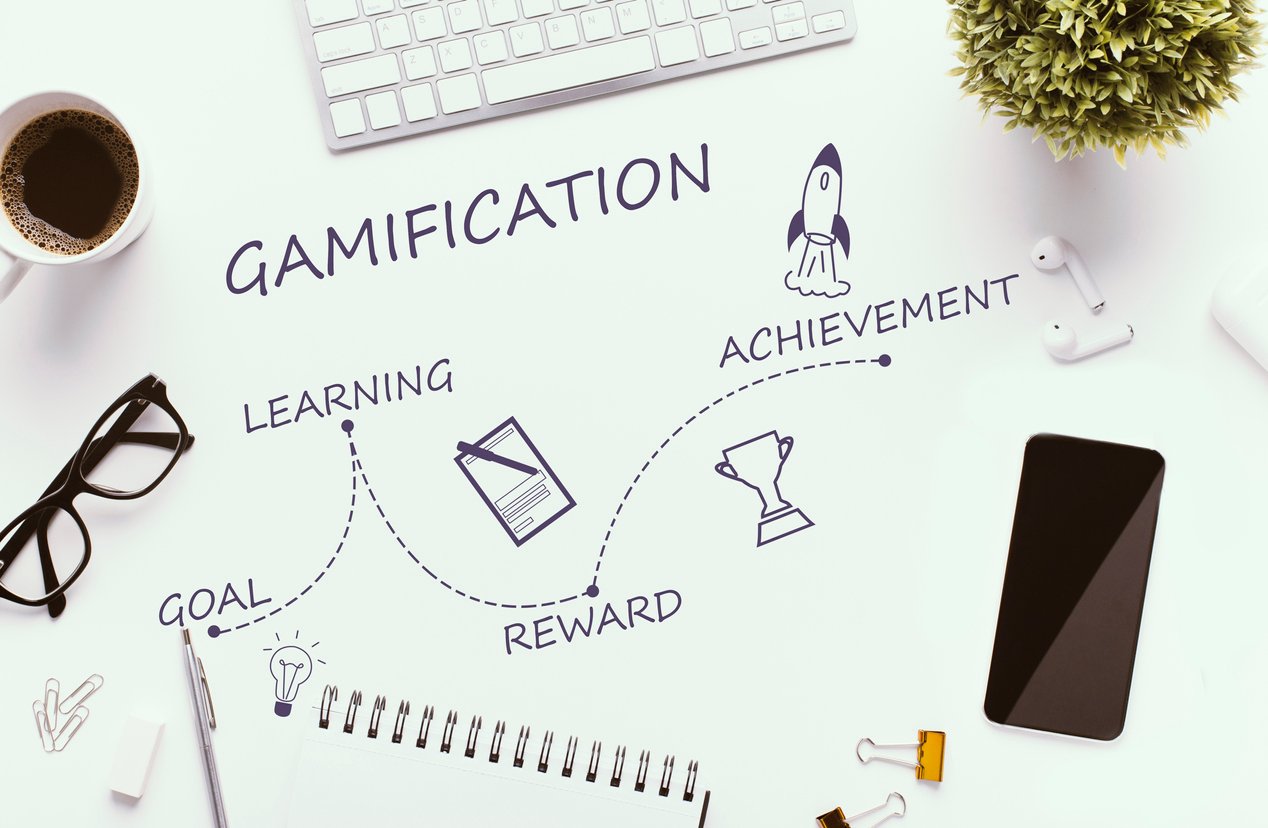Training with Gamification

Gamification is a fun way to engage employees and teach them new skills while boosting teamwork and inspiring individuals to work harder. Learn how to include it in your training process and what elements to focus on.
One of the biggest trends in workplace learning is gamification. This technique provides many benefits to both managers and employees, including increased engagement. That’s why the gamification market is set to reach $30.7 billion by 2025.
The benefits for new employees include inspiration and motivation, a fun learning environment, and a more desirable place to work. Learn more about why this technique is gaining traction and the best ways to make it a part of your training strategy for new hires.
What is gamification?
Gamification is when an organization incorporates gaming into training and e-learning for their employees. This technique allows you to integrate compelling game-like elements — like narrative, problem-solving, and rewards — that help employees become engaged in your training while still conveying the lessons in an effective way.
Other benefits of gamification in training activities include:
- Employees can interact with each other in new ways, promoting teamwork
- Rewards help them feel that they’ve reached a goal and achieved something
- Learners stay motivated and engaged
- Employees retain more knowledge when they’re more engrossed in the content
- They perform better at work
- Learning can take place at individual employees’ own pace
According to Review42, 95 percent of employees enjoy gamification in their work and 72 percent say that gamification inspires them to work harder. Meanwhile, 78 percent of respondents in the TalentLMS 2019 Gamification at Work Survey said that gamification in recruiting would make a company more desirable to them.
Gamification has changed the traditional workplace, where the concepts of playtime and work time have typically been separated. But integrating gamification into training can help employees feel more motivated to perform better and stay focused.
When you use this technique to train new employees, in particular, you’re setting them up for a more satisfying work experience and helping them acclimate to the company culture.
Creating your gamification strategy
When you’re considering taking advantage of these benefits for new hires, where do you start? Here are four strategies that will help you succeed.
1. Create goals and benchmarks
First, nail down the specific goals that you want to come from gamification. These goals could be better collaboration among team members, more engagement at work, or enhanced skillsets for certain employees.
For new hires specifically, create benchmarks for the tasks they should know how to do upon completion of the training. You could implement a test at the end of the game to assess whether or not these benchmarks have been met.
2. Different employees have different needs
It’s important to match your gamification strategy to these goals as well as the strengths of the employees who will be taking part in training. If, for example, there are less tech-savvy individuals in the class, it may be wise to invest in a simpler gamification method for training.
Recognize that different employees will have different needs. Make sure you offer different levels based on their roles and responsibilities as well as their current skillsets.
3. Focus on rewards and encouragement
Also, ensure that you have a method in place to reward the trainees for completing the game. While an employee may be able to complete or win a game during training, still implement mechanisms outside of the game for recognition. This will help employees further relate their gaming experience to work.
Remember that gamification should be a positive way to train workers. Never use it as a punishment tool, or the benefits won’t be realized. Instead, maintain an encouraging environment that only utilizes a healthy and friendly level of competition. Otherwise, some employees could come away with negative experiences.
4. Incorporate feedback
Make sure your strategy includes opportunities for feedback. One big benefit of gamification is that workers can receive automatic feedback as they’re going through the training. This allows them to compare their performance to others and immediately see if goals or benchmarks aren’t being met.
Use this feedback to help employees sharpen their skills and work harder. When they feel they’re not keeping up with others on their team in the game, they’ll be motivated to put more effort into learning.
Finally, remember to ask for feedback about your new gamification strategies. Ask workers what they liked about it and if anything can be improved. Also ask for feedback within interviews about whether new hires would be interested in gamification elements for training purposes. This helps you gauge interest from candidates and also hire for culture fit.
When you’re looking for feedback solutions and ways to increase employee retention, Crewhu offers solutions like goal-based contests, surveys, and peer recognition. Learn more about the platform by contacting Crewhu.







